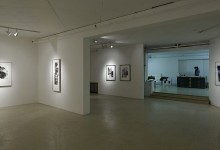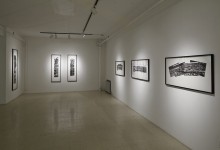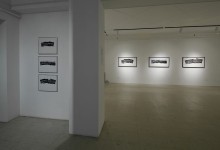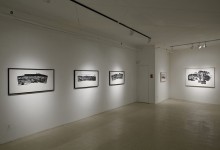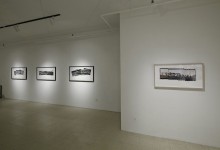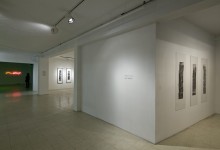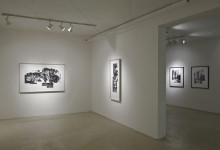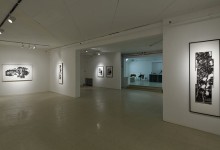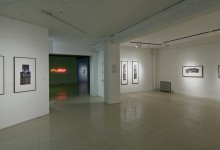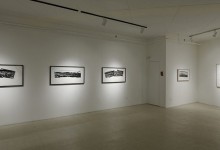Melvin Charney: Des arbres
The technique of assembling snapshot photographs into panoramas evokes picturesque views encountered on vacations: too grandiose to take in at once, impossible to capture with the narrow lens of the amateur camera. They testify to the desire to document the process of looking, of shifting the gaze from one frame to the next, then aligning the images by the horizon line to reproduce the feeling of being surrounded by the landscape. Melvin Charney uses the same technique to create assembled photographs that depict singular ordinary trees. He composes them out of narrow views: the trunk, the branches, the leaves.
These are sculptural photographs: built out of separate elements that remain distinct even as the subject is perceived as a whole. The assemblage echoes the shape of the tree itself while maintaining its rectangular boundaries. Sometimes the black borders don’t quite line up, sometimes they are perfectly joined, and sometimes they are deliberately shifted to create discontinuities. The tree becomes higher at the expense of the illusion: the elements are visibly repeated, and the tree comes forth as a fictional construct. Such breaks create a distance from the subject of the photograph, and the process of looking joins the process of constructing the tree as an image. There is a choice either to overlook the clearly artificial elongation of the tree, or to follow the temptation of tracing the seams where separate images combine, revealing the artifice: the borders counter the pull to see the image as a whole. As a result, these works have a temporal quality, as they document the trees in the process of being constructed as subjects. The individual parts have been taken in succession, then assembled. The final product contains the history of lining up the images, of making decisions about the straightness of the tree trunks and the direction of the branches.
“Seeing the forest for the trees” is an expression that describes an inability to see generalizations and to favor details at the expense of patterns. Charney’s work counters the negativity implied by this view, and instead focuses on the individual trees as autonomous agents. From his early photographs that explored Montreal’s vernacular architecture, Charney has been interested in revealing the structures of ordinary things. He shifts the focus away from the landscape as a whole and looks at the psychological depth of its individual parts, allowing their stories to come forth through actively participating in its construction as an image.
Through the conscious (re-)construction of the trees, Charney reveals their nuances and differences, demonstrating that each is worthy of our gaze. Without anthropomorphizing his subjects or using them as metaphors, he allows the photographs to pivot on the boundary between landscape and portraiture; the trees are presented as self-contained worlds. Charney gives them the power of agency, and in that, he exposes the possibilities of building a relationship to place that is rooted in blurring the hierarchical boundaries between the environment and its inhabitants.


